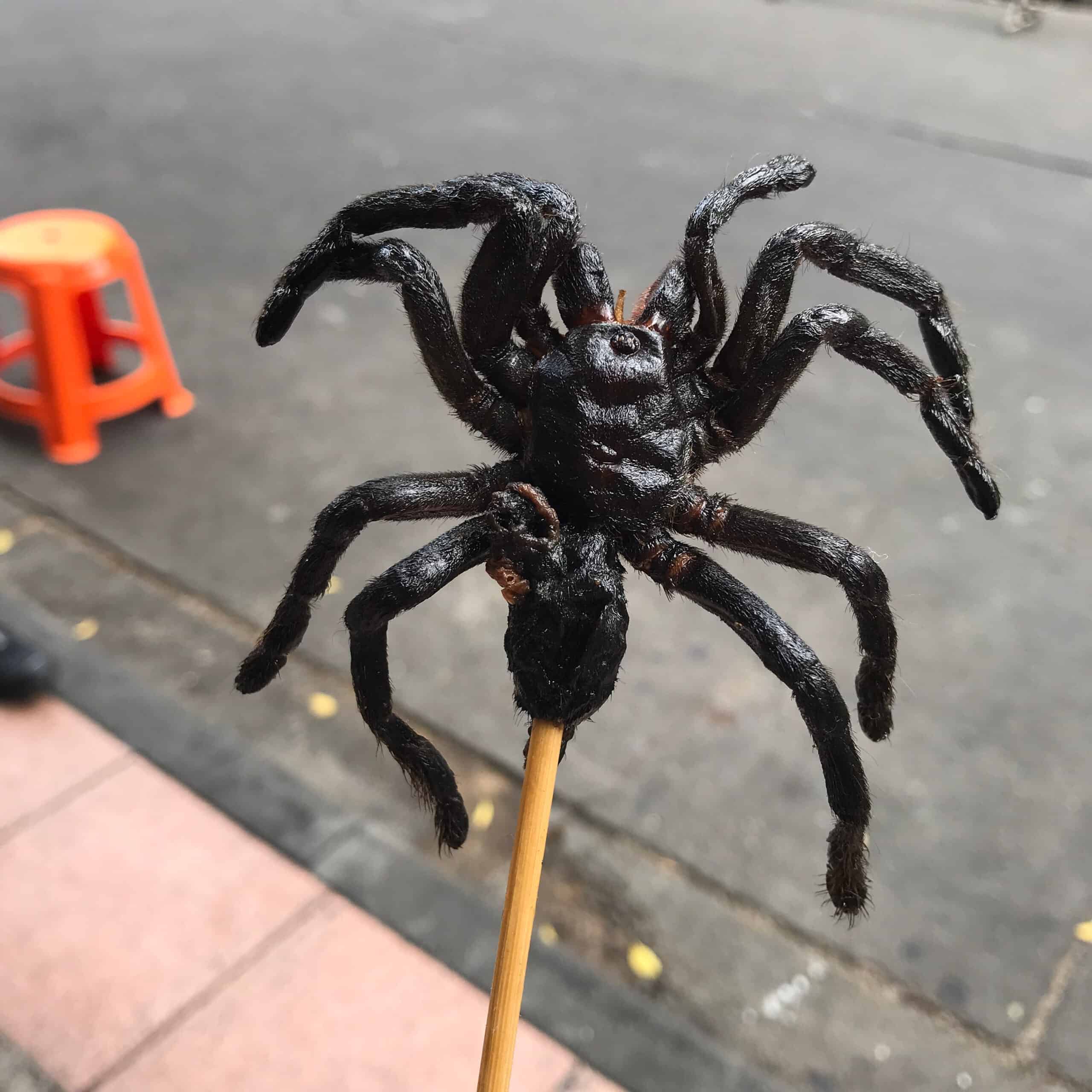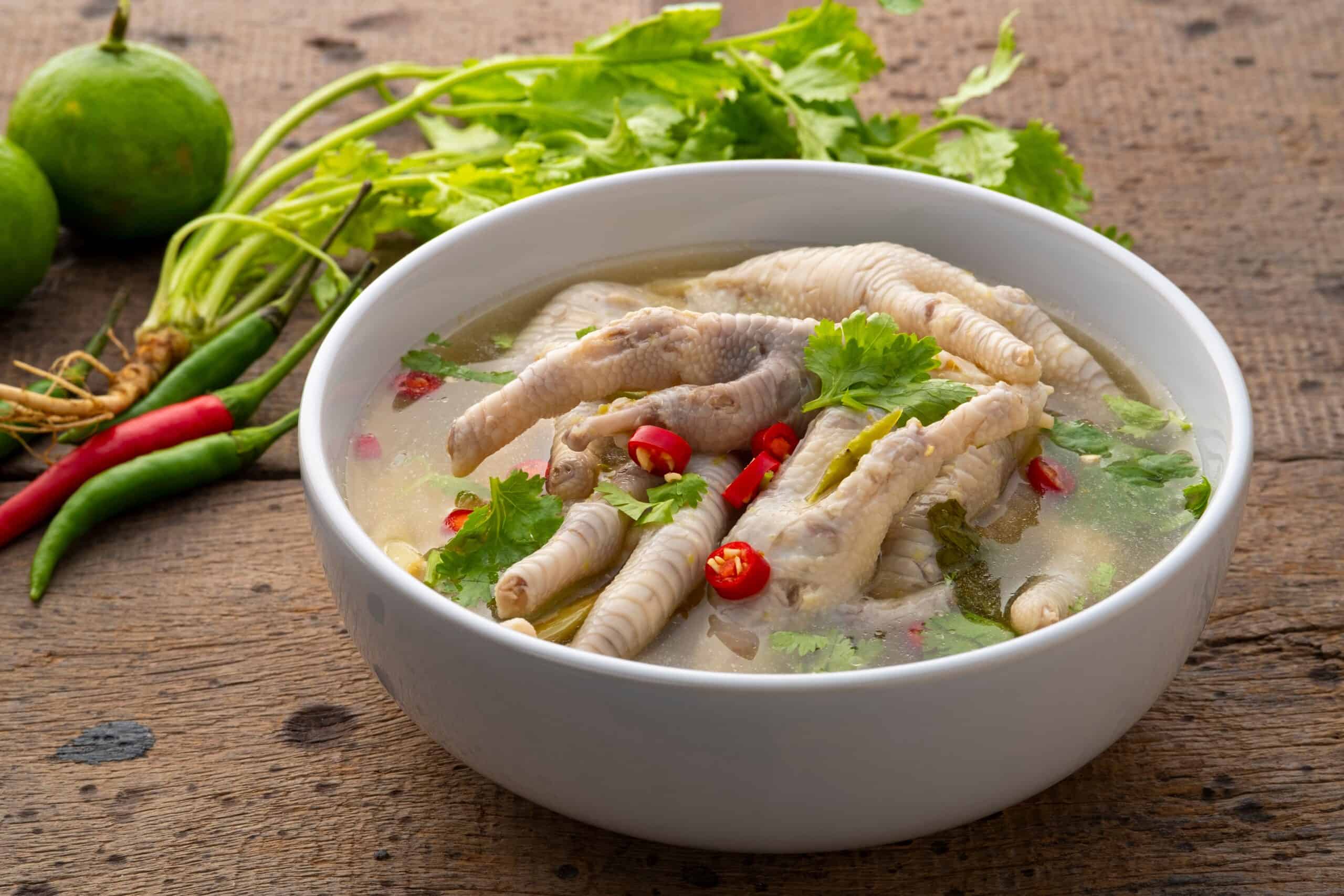Exploring the culinary traditions of different cultures often leads to discovering unique and exotic dishes that are deeply rooted in local heritage. While some foods are enjoyed worldwide, there are certain delicacies that remain closely tied to their place of origin. These exotic foods, ranging from unusual animal parts to creatively prepared insects, offer a taste of the adventurous spirit and rich history of their homelands. In this article, we delve into the top 9 exotic foods you won’t find outside their native countries, each providing a distinctive and unforgettable culinary experience. From the creamy crab brains of Suriname to the fermented shark meat of Iceland, these dishes are sure to intrigue and challenge even the most adventurous eaters.
Tacoma Worm – Guyana

The tacoma worm is a sought-after delicacy found in the rainforests of Guyana. These edible worms are prized for their high protein content and unique flavor profile. Often consumed raw or roasted, tacoma worms have a distinctive taste that some compare to coconut. The preparation involves cleaning and roasting the worms until they achieve a crispy exterior and a tender interior. This exotic food highlights the ingenuity of Guyanese cuisine, utilizing available natural resources to create a protein-rich, flavorful treat. The tacoma worm is a testament to the diverse culinary practices in Guyana and the adventurous spirit of its people.
Kale Pache – Iran

Kale Pache is a traditional Iranian breakfast dish made from the head and feet of lamb or sheep, slow-cooked with aromatic spices such as turmeric, cinnamon, and cardamom. This hearty meal is celebrated for its tender meat and gelatinous texture, which comes from the collagen-rich parts of the animal. The dish is typically served with fresh bread and garnished with lemon juice and herbs. Kale Pache is not only a nourishing meal but also a cultural staple that dates back centuries, reflecting Iran’s rich culinary history. Its preparation and consumption are often steeped in tradition, making it a significant part of Iranian cuisine.
Giant African Snail – Ghana

In Ghana, the Giant African Snail is a popular and exotic ingredient in many traditional dishes. These snails are much larger than typical garden snails and are known for their tender, succulent meat. They are carefully cleaned, seasoned, and cooked in various ways, including in soups or stir-fried with bold spices. The earthy flavor of the snail meat is a favorite among Ghanaians and offers a unique taste experience for adventurous eaters. The Giant African Snail is a testament to Ghana’s bold and diverse culinary scene, where unconventional ingredients are transformed into beloved local delicacies.
Sheep Brains – Lebanon

Sheep brains are a cherished delicacy in Lebanon, celebrated for their creamy texture and rich flavor. Typically sautéed with aromatic spices and served with warm bread or rice, this dish is a favorite among locals and adventurous food enthusiasts. In cities like Sidon, sheep brain sandwiches are a popular street food, providing a unique culinary experience that reflects Lebanon’s bold and diverse cuisine. The preparation of sheep brains requires careful cleaning and cooking to achieve the desired taste and texture, making it a true exotic food that highlights the intricacies of Lebanese cooking.
100-Year-Old Eggs – Hong Kong

Also known as century eggs, these preserved eggs are a Chinese delicacy that undergoes months of preservation in a mixture of clay, ash, and quicklime. The preservation process transforms the egg, giving it a greenish hue and a strong, pungent flavor. The texture becomes gelatinous and creamy, offering a unique taste experience that is highly valued in Chinese cuisine. Century eggs are often enjoyed with congee or as part of a cold dish with tofu and soy sauce. This exotic food is a testament to the rich culinary traditions of Hong Kong and the broader Chinese gastronomic landscape.
Deep-Fried Tarantula – Thailand

In Thailand, deep-fried tarantulas are a popular street food snack, offering a crunchy exterior and a soft, juicy interior. Often seasoned with salt and garlic, these spiders are a common delicacy in regions like Skuon. The preparation involves frying the tarantulas until crispy, creating a unique texture and flavor that adventurous eaters can enjoy. This exotic dish is part of Thailand’s vibrant street food culture, showcasing the country’s willingness to incorporate unusual ingredients into its cuisine. Deep-fried tarantulas provide a memorable and daring culinary experience for those brave enough to try them.
Balut – Philippines

Balut is a fertilized duck egg with a partially developed embryo, commonly eaten in the Philippines. The egg is boiled and eaten directly from the shell, providing a rich and flavorful experience that includes the taste of egg, broth, and the embryo itself. Balut is often enjoyed with a sprinkle of salt or a dash of vinegar, enhancing its savory flavor. This street food delicacy is a favorite among Filipinos and is believed to be a source of strength and vitality. Balut offers a unique glimpse into the adventurous and diverse culinary traditions of the Philippines.
Chicken Feet – Asia, South America, Africa

Chicken feet are a popular dish in many parts of Asia, South America, and Africa. Known for their unique texture and flavor, chicken feet are often cooked in soups, stews, or fried until crispy. In China, chicken feet are a common dim sum dish, while in Mexico, they are used in traditional soups like caldo de pollo. The preparation typically involves marinating the feet in soy sauce, garlic, and other spices before cooking. Chicken feet are also believed to have health benefits, including improving skin and joint health. This exotic food is a testament to the diverse culinary practices across different cultures.
Hakarl – Iceland

Hakarl is a traditional Icelandic dish made from fermented shark meat. The preparation process involves burying the shark meat in gravelly sand and allowing it to ferment for several months. Once the fermentation is complete, the meat is hung to dry for another few months before it is ready to eat. The resulting dish has a strong, pungent odor and a chewy texture, offering a taste experience that is both challenging and unique. Hakarl is often served in small cubes and accompanied by a shot of Brennivín, a local schnapps. This exotic food is a testament to Iceland’s resourceful culinary practices and its ability to transform unusual ingredients into a cherished delicacy.
This article originally appeared on Rarest.org.
More from Rarest.org
Discovering niche hobbies can be an exciting adventure. Each hobby has a passionate community, unique traditions, and special skills. Read more.
Exploring historic libraries is a journey through time, offering a glimpse into the rich heritage of knowledge and culture. These libraries, with their vast collections and stunning architecture, have preserved countless treasures and stories from the past. Read more.
In the world of music, many influential artists often remain in the shadows, overshadowed by the more famous names they inspired. These unsung musicians have significantly shaped popular music, leaving an indelible mark on various genres. Read more.



